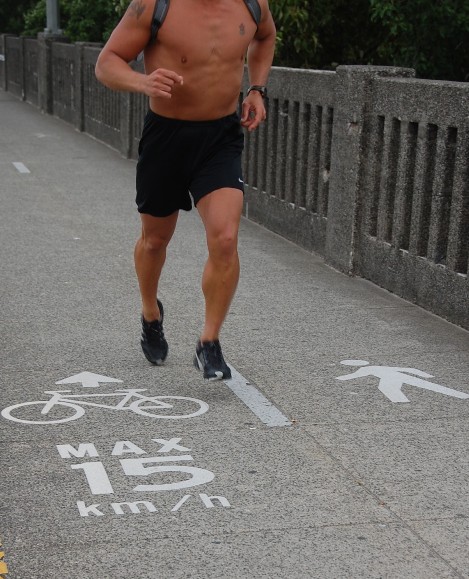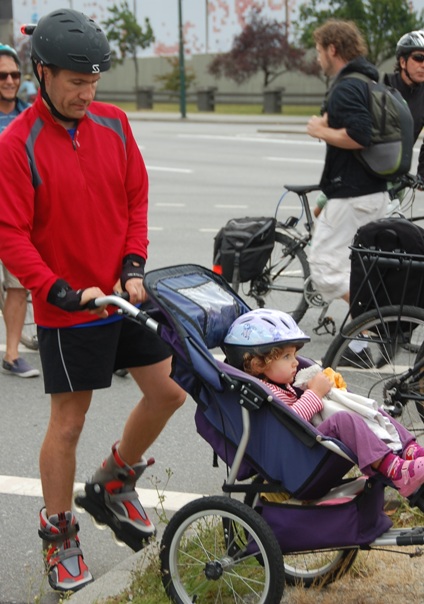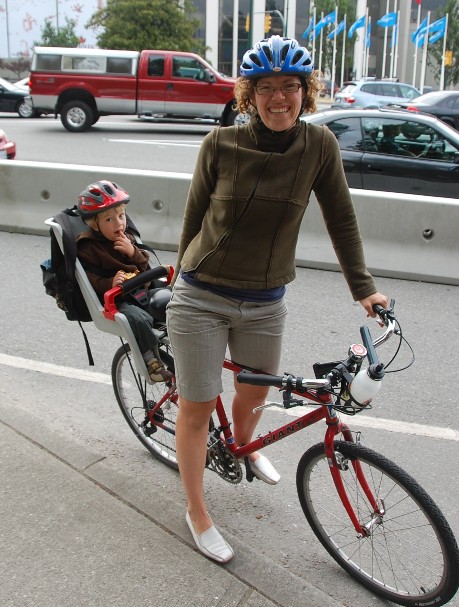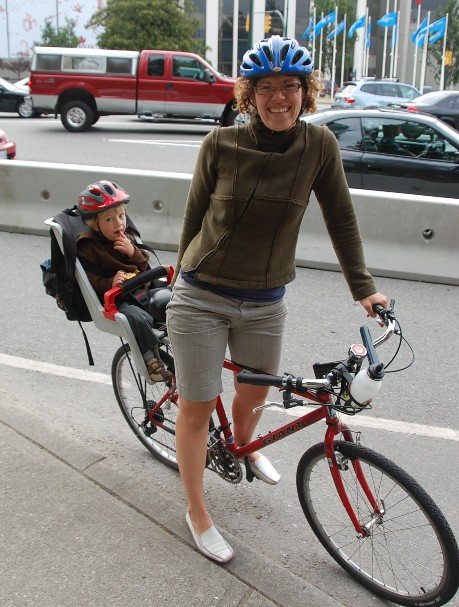So far, so good.

The media predicted chaos; they got “trouble-free start.” Since first impressions can establish the frame from which all other subsequent stories are drawn, this is good news for the Mayor.

The real test will be in a few hours, of course, when the afternoon rush starts. Will the Granville Bridge draw enough traffic to ease the flow on Burrard and Thurlow?
Nonetheless, the differences between this pilot and the 1996 failure are dramatic: better preparation, better messaging, choosing the east side of the bridge for the lane, and so many more cyclists.
And more just than cyclists. Those on feet, though inconvenienced by having to get to the west sidewalk for all crossings, have benefitted immensely both in terms of safety and comfort.

And they’re not the only ones:
















The key decision after the trial in deciding whether to implement the trial configuration or shifting the barriers a half lane to the west and giving the cyclists two 1.5m bike lanes on the roadway with concrete barriers and allowing pedestrians back onto the east sidewalk will be the weighing of the following interests:
(1) the delay to some cyclists in the event that he/she is stuck behind a slower cyclist on a narrower bike path; or
(2) causing a delay to say 50% of the pedestrians using the bridge by forcing them to cross over to the west sidewalk plus smaller delays caused by congestion on the sidewalk.
Another factor is the relative number of pedestrians who use the bridge versus the number of cyclists who use the bridge.
In a sense, it’s a question of incrementally improving cyclists’ access (ability to pass)
at the expense of universal access for pedestrians (using either side of the bridge).
If safety is the main issue for cyclists, achieving safety at the expense of a bit of speed would seen to be a reasonable compromise.
There might be other options than the two you’ve just proposed Ron. For example, two full lanes dedicated to cycles – if the factors are truly as you say, wouldn’t that be the best of both worlds?
I suspect that you are both overplaying the impact to pedestrians of the current scheme and underplaying the negative impact that depriving cyclists of the ability to pass would have on creating a safe and most importantly unintimidating cycling environment.
If we accept that it is a good thing to encourage bike ridership, then the best “bang for your buck” in doing that is to target the “interested but concerned” (see “The 4 types of transportation cyclists” – http://www.portlandonline.com/TRANSPORTATION/index.cfm?a=158497&c=44671)
You are not going to win those people over if they feel they are going to be holding up a line of guys doing Lance Armstrong impersonations – and this is about perception as much as it is about other cyclists being a**holes. The problem is not really comparable to that of lanes for cars, since a cyclist’s maximum speed is directly proportional to their fitness (heh, if that were true for drivers, the roads would be a different place.)
Anyway, I rather doubt you’d be seeing the pictures of people cycling with their kids across the bridge if the cycle lanes were 1.5 metres wide.
By the same token, you can’t cater to the Lance Armstrongs pedalling down the road at 60km/h either (we don’t cater to the speed demons in sportscars, do we?).
If you can’t get some understanding regarding peoples’ differing abilities and acceptance of other cyclists within the cycling community, how can you expect others to do so?
If you stand behind someone on a narrow escalator and they don’t walk up it, do you barge past in a huff?
If you are wallking down the sidewalk and there’s a group walking three abreast, do you barge through?
If you’re driving on a two-lane road (say 12th Ave., when cars are parked) do you zoom past in the right hand lane at an intersection?
As for the cyclist with the child carrier, the bike lanes meet up with 1.5 m bike lanes on Hornby and Burrard. A 1.5 m width would be consistent.
The division of 1 lane into two bike lanes is a least drastic means approach. There’s give and take on several sides.
On the pedestrian side, I know a lot of running groups cross Burrard Bridge – should they be prioritized like the Lance Armstrongs?
And if you think about it, walkers use less environmental resources than cyclists – no aluminum smelters for the bike frames, less rubber in the running shoes, less plastics than in goretex jackets or helmets, …
Another question:
When cycling on the seawall and you get to an area marked “Walk Bikes” – what do you do?
There isn’t a “cycling community” Ron, just people who ride bikes. And people, as I am sure you are aware, come in all dispositions.
Look at me in my green chariot. First whippet on the new bike lane!